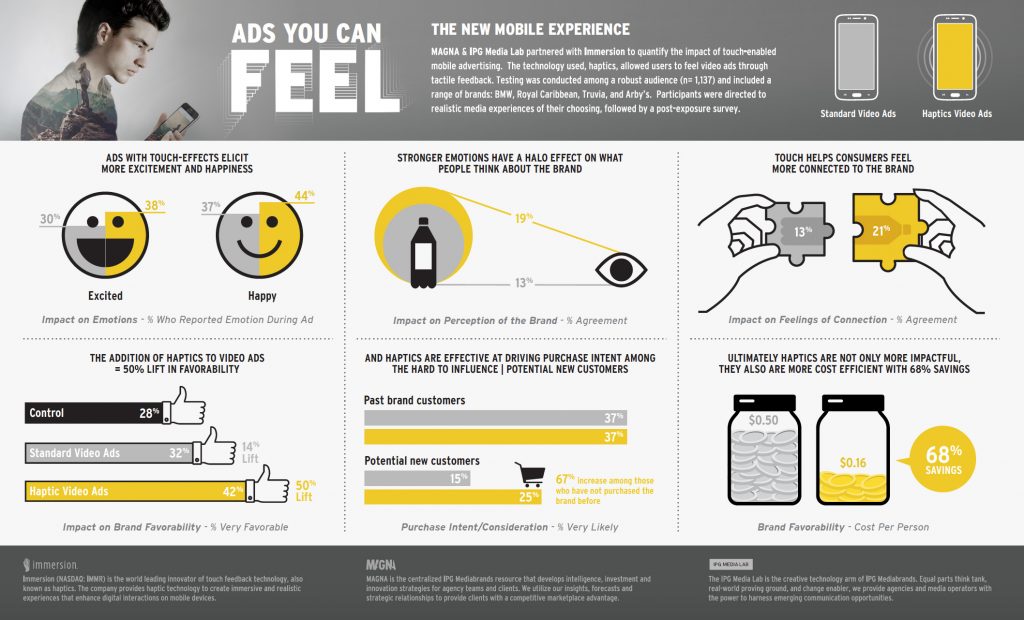TouchSense Ads make you happy & excited.
Touch in mobile advertisements is proving to be a powerful way to engage and connect with consumers.
In a study released by IPG Media Labs, MAGNA and Immersion Corporation, TouchSense Ads, ads you can feel, increase users’ sense of connection with brands and elicit strong emotional responses.
- Compared to standard video ads, haptic video ads show a 62% increase in feelings of connection to the brands
- More users felt excited after viewing ads with haptics – 38% compared to 30%
- More users felt happy after viewing ads with haptics – 44% compared to 37%
Arby’s We Have The Beef
View with Android Chrome browser to feel touch effects
Haptic Video Tested in IPG MediaLabs, MAGNA and Immersion Study
The result?
More users felt the brand itself was exciting or happy. The report leads researchers to conclude that TouchSense Ads create a halo effect on brand perception, and improve brand favorability – a 50% lift when comparing TouchSense Ads to static ads, and a 68% cost saving in increasing brand favorability, based on the cost of standard video ads compared to cost of haptic video ads.
As brands seek ways to leverage the latest technology to enable user interactivity, these results serve as proof points for measurement of engagement and connectivity of haptic technology.
Immersion’s TouchSense Ads are a new mobile experience that engages and enables brands and advertisers to connect with their audiences. Learn more about TouchSense Ads.
MAGNA & IPG Media Labs Haptic Ad Study
Study Methodology
The trial was conducted with leading brands from a range of industry verticals, such as BMW, Royal Caribbean, Arby’s, and Truvia.
The media trial consisted of a total of 1,137 Android users, recruited from a representative online panel. The participants were asked to take a mobile survey on the media experience of their choosing, where they were able to view a webpage and watch video content. Each participant was randomized into a test cell that determined what type of pre-roll ad appeared prior to the content. Passive data collection took place during the ad experience, such as completion rates, time in view, etc. Afterward, participants completed a survey that measured traditional branding metrics and qualitative feedback.


